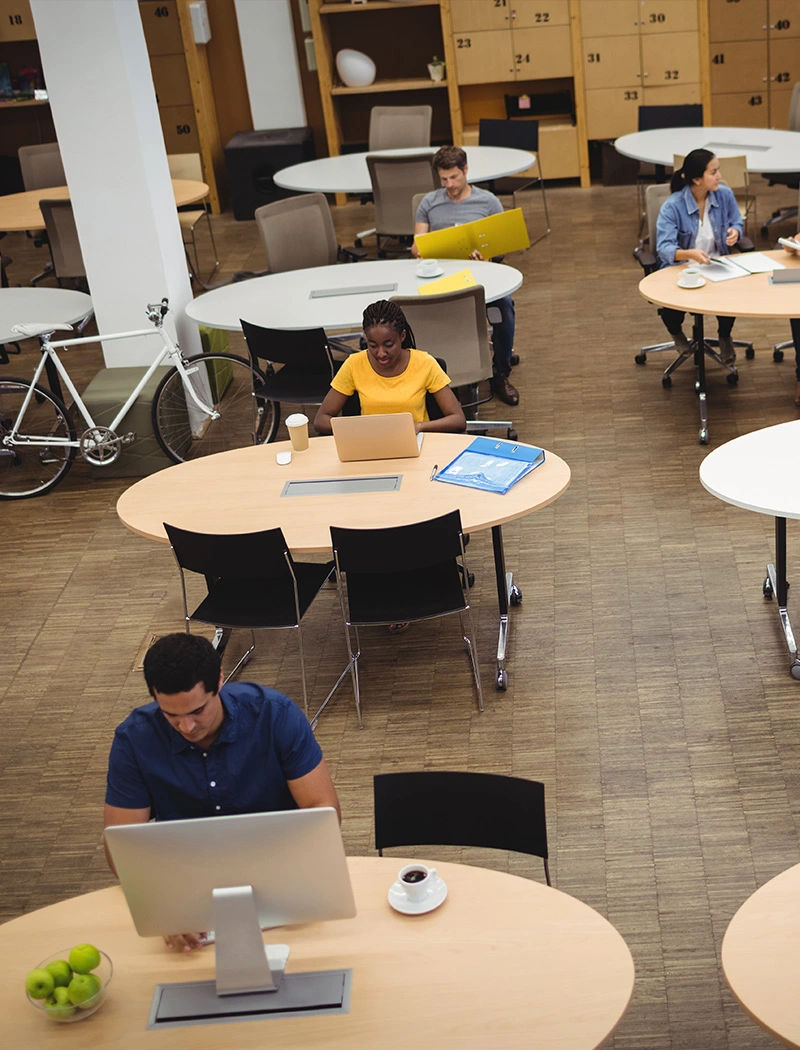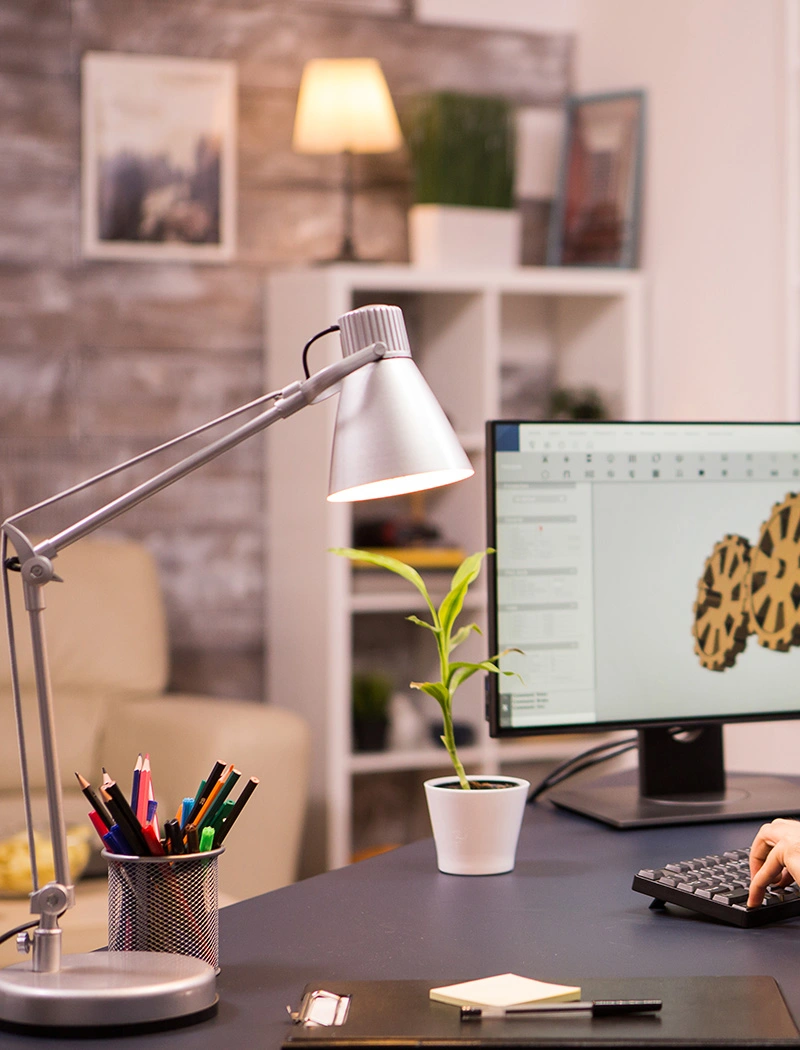The innovations that the younger generations are bringing to the workforce are taking the game to a different level. Offices are no longer limited to desks and chairs; they must also include sports facilities, dining areas, game rooms, nap rooms, and even yoga studios. These innovations increase the motivation of employees and make them happier and more productive in the workplace.

Technology in Effective Workspaces
change in approach to work
Technology plays an important role in shaping the way the younger generations work. The rise of remote work and the use of digital tools mean that work can now be done from anywhere. This has led to a change in approach to work, focusing on productivity and results rather than the number of hours spent in the office.
The innovations that the younger generations are bringing to the business world are also shaping the future of workspaces. As they join the workforce, they bring a new approach to workspaces. They no longer need a desk and chair to do their work; they need their own world. Offices are becoming more than just a place to work; they are being described as a community center, a creative space, and even an education center. These spaces offer interactive areas with a heavy emphasis on technology, game areas that will increase creativity, and colorful designs.
Personalization
personalization and customization in the workplace
The younger generations value individuality, and this extends to the workplace. This has led to an emphasis on personalization and customization in the workplace. From unique desk layouts to colorful decor, young workers want to feel that their workspace is a reflection of themselves. This trend has led to a shift towards more creative and unique workspaces, as opposed to the standard cubicle setup.
Additionally, the younger generations, who are influenced by social media, desire aesthetically pleasing and unique offices. As a result, the architecture industry must design offices that are not only functional but visually appealing. For example, artwork on the walls, plants, and motivational neon lights may seem like small touches that make the office more appealing, but they are creative key elements that contribute to shaping the future.


Youth Influence in the Future of Workspaces
more changes and approaches in workspaces
As younger generations continue to enter the workforce, we can expect to see even more changes and approaches in workspaces. The rise of technology will undoubtedly continue to shape the way we work, with an increase in remote work and effective spaces. Additionally, as employers strive to attract and retain top talent, emphasis on personalization is likely to increase. Shared workspaces will continue to be a popular option for those prioritizing collaboration and flexibility.
This new approach is leading to many innovations in the architecture industry. For example, modern offices need to be more customizable and flexible. Employees may want to work in different environments, so offices are being designed to offer different working spaces such as open areas, private compartments, and even outdoor spaces.
As a result, younger generations are leading important changes in how we approach workspaces. Companies that can adapt to these changes will be in a better position to attract and retain top talent, and the key to this is through creative ideas from architects who can implement them. The future of workspaces is changing, and it will be interesting to see how it continues to evolve in the coming years.